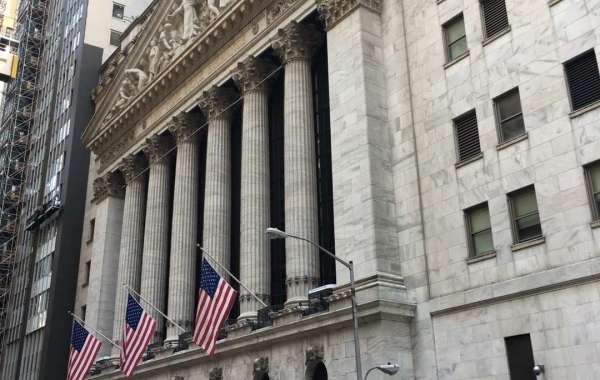In the week ending September 29, due to the impasse in the U.S. congressional budget dispute, the funds to keep the federal government running are about to dry up, resulting in the U.S. government being forced to "shut down" nearby. It was not until the last moment of September 30 that the U.S. Congress passed a provisional appropriation bill to temporarily avoid the government's "shutdown".
On the other hand, the yield of U.S. Treasury bonds soared, and the yield of the benchmark 10-year Treasury bond reached a high since 2007. The U.S. stock market was under constant pressure and turbulence, and the three major stock indexes recorded a large decline in September. The progress of the general strike of American auto workers has also made the market anxious. At present, no significant progress has been made in their negotiations on labor wages.
If the U.S. government really falls into a "stop", what impact will it have on the market and the economy? The U.S. dollar index has continued to strengthen recently, and the U.S. stock market has suffered a correction. What is the reason behind it? U.S. bond yields are still upside down. Can the U.S. economy achieve a "soft landing"?
On September 29, U.S. Eastern Time, "Hight on Wall Street" invited Michael Pearce, a senior U.S. economist at the Oxford Institute of Economics, to talk about his analysis of the risk of the U.S. government's shutdown and his outlook on whether the U.S. economy can achieve a soft landing.
Southern Finance: If the U.S. government falls into a "s shutdown", what will be the impact on the U.S. economy?
Michael Pearce: How much impact it has on the economy depends on how long the shutdown lasts. According to our estimates at the Oxford Institute of Economics, the government shutdown will hit the gross domestic product (GDP) of the United States by about 0.2% every week, and about half of the losses will be made up after the government reopens.
Therefore, I don't think (if) the government shuts down, it won't put the U.S. economy in trouble in the fourth quarter. The greater risk is that the government shutdown will make the Federal Reserve's statistics more complicated. This is obviously one of the recent downside risks of the economy, and the government shutdown itself may also affect the release of economic statistics, including the September employment report to be released this Friday.
Southern Finance: The US dollar index has risen to its highest level since November last year, and the yield of 10-year treasury bonds has also reached its highest level since 2007. The U.S. stock market has suffered a sharp correction in the past week. What factors have led to this situation?
Michael Pearce: I think this reflects the signal of "higher for longer" clearly expressed by the Federal Reserve at the policy meeting, which was also recognized by other policymakers in the following weeks. In fact, I think investors are now more optimistic about the economic outlook, which will take longer for inflation to fall, while the Federal Reserve will have to maintain higher interest rates and maintain high interest rates for a longer period of time. This is the reason for the rise in long-term bond yields, which in turn puts pressure on the stock market and keeps the US dollar strong against other currencies to a certain extent. In fact, the tightening of financial conditions we have seen is a key transmission mechanism, through which the transmission of these policies will weaken the economy. I think there is a certain risk for investors to think that the economy has come out of trouble.
Southern Finance: You just mentioned that the Federal Reserve will keep interest rates higher and longer. In view of the changes in the economic situation and the performance of the stock market, do you expect the Federal Reserve to raise interest rates again in 2023?
Michael Pearce: I think it is unlikely that the Federal Reserve will raise interest rates again this year. Obviously, they have taken a very hawkish position, but the key difference is that we will see a further slowdown in the economy. I think investors underestimate the lag of monetary policy through economic transmission. In addition, fiscal policy has been driving economic growth this year, but it will become a drag factor in the coming fiscal year. I also think that there are many factors that will adversely affect consumers' income. We have seen that student loan repayment has begun, and the rise in oil prices has also put more pressure on consumers' disposable income. These factors, coupled with the slowdown in the labor market, will slow down economic growth more significantly before the end of this year. I think the weakness of the economy will keep the Federal Reserve on the sidelines.
Southern Finance: Many industries have been negatively affected by policy tightening. Do you think the Federal Reserve will still adhere to the 2% inflation target?
Michael Pearce: What we have seen so far is that the Fed's policy has not led to a recession. I think the tenacious economy of the United States is obviously a huge surprise this year. The Federal Reserve needs to maintain high interest rates to reduce inflation. We have seen policymakers repeatedly mention that during the recession in the 1970s, the Federal Reserve's monetary policy turned too early, causing inflation to accelerate again by default. At that time, it had a certain impact on the way consumers and enterprises think, resulting in lowering the cost of lowering inflation in the 1970s. The Federal Reserve has learned these lessons. Policymakers now believe that inflationary pressures should continue to be dealt with in the short term, and may be relaxed in the long term. I think that even if there is a recession in the next few quarters, the Federal Reserve will keep interest rates high.
Southern Finance: We have just talked about the possibility of an economic slowdown at the end of this year. As we have seen, the yield curves of U.S. 10-year and March Treasury bonds have been upside down for a long time, which is a strong indicator of economic recession. But now the market consensus is that the U.S. economy will achieve a "soft landing". What do you think of this contradictory situation?
Michael Pearce: I don't think the yield curve has a special impact on the economy, and there is no causal relationship between the inversion of the yield curve and the recession. I think what it really tells us is that inflation is currently very high and is expected to fall sharply in the future. At that time, the Federal Reserve will start to cut interest rates according to inflation, rather than cut interest rates in response to the need of the weak economy. The inverted yield curve has begun to level out in the past few weeks, which more reflects the market's optimism about the economic situation. Therefore, in fact, there is no contradiction between the two. As people's optimism about the soft landing of the economy grows, it can be seen that the yield curve begins to flatten.
Southern Finance: So what key economic risks should investors and enterprises pay attention to in the next few months?
Michael Pearce: I think the biggest risk actually comes from the labor market. At present, many people underestimate the momentum that the U.S. economy has begun to weaken and the possibility of further weakening. Since the beginning of this year, employment growth has continued to slow down, and the trend of revising data is also downward. We can already see signs of continued weakness in the labor market, and some broader labor market indicators and survey data also show this. For example, indicators to measure whether consumers believe that employment opportunities are sufficient indicates that consumers believe that the unemployment rate may rise from the current level. Therefore, if the labor market begins to weaken, it may greatly weaken consumer spending, which has been the driving force of economic growth this year.








